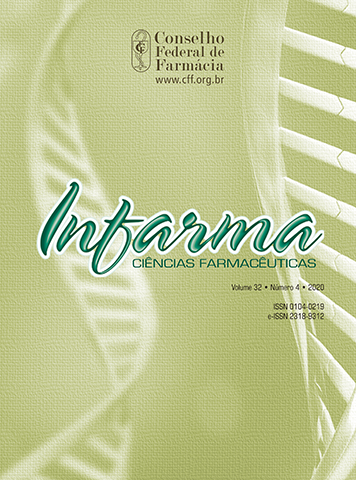DRUG-RELATED PROBLEMS IN EMERGENCY ROOM PATIENTS AT A UNIVERSITY HOSPITAL
DOI:
https://doi.org/10.14450/2318-9312.v32.e4.a2020.pp383-390Keywords:
pharmacotherapy, drug-related problems, emergency room, adverse drug reactions, use of medicineAbstract
Drug-related problems (DRP) are caused by failures that affect the effectiveness and safety of drugs and represent an important challenge for health systems.This study identified and evaluated cases of MRP in the Emergency Room (ER) of Hospital das Clínicas Samuel Libânio (HCSL).It is a descriptive and cross-sectional study conducted through interviews with patients who sought care at the HCSL ER. The identification and classification of the DRP was selected based in the Second Consensus of Granada. Of the 100 patients interviewed, there was a high prevalence of DRPs in the group of patients over 60 years old (46%), but there was no significant difference between female (24%) and male (22%). Most respondents had little adherence to treatment (68%) and low education level, with no elementary education (62%). Among all types of DRP, the most prevalent were quantitative ineffectiveness (78%) and untreated health problem (16%). The DRP cases at HCSL ER are common in patients with chronic diseases aged over 60 years due to non-adherence to treatment. These results demonstrate the importance of implementing pharmacotherapeutic monitoring based on education and primary health care.
Downloads
Published
How to Cite
Issue
Section
License
Authors who publish in this journal agree to the following terms:
- Authors retain the copyright and grant the journal the right of first publication, with the work simultaneously licensed under the Licença Creative Commons Attribution which allows the sharing of work with acknowledgment of authorship and initial publication in this journal.
- Authors are authorized to take additional contracts separately, for non-exclusive distribution of the version of the work published in this journal (e.g. publish in institutional repository or as a book chapter), with acknowledgment of authorship and initial publication in this journal.
- Authors are allowed and encouraged to publish and distribute their work online (e.g. in institutional repositories or on their personal page) at any point before or during the editorial process, as this can generate productive changes as well as increase the impact and Citation of published work (See O Efeito do Acesso Livre ).


